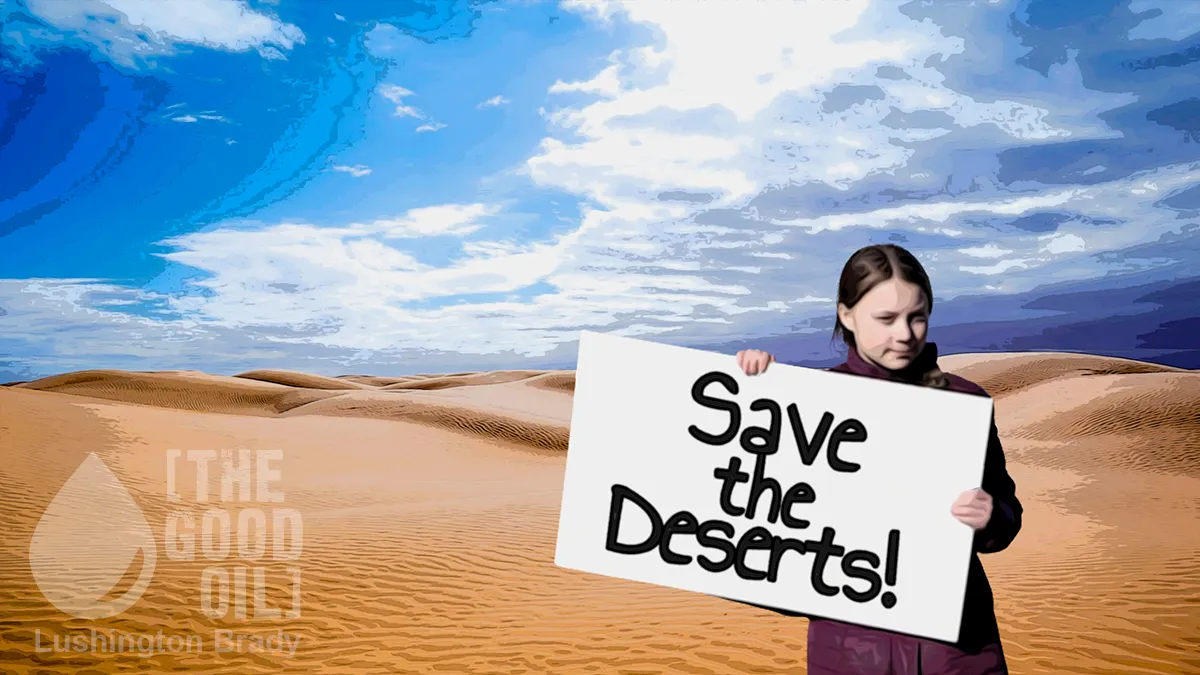Table of Contents
You’ve got to hand it to the Climate Cult: they’re dab hands at finding new things to be afraid of. Global warming, I mean, climate change, I mean, global boiling, oops, ‘global weirding’ has been blamed for everything from impending famine to the end of the humble baseball bat.
Even good news is terrifying to these cultist loons. After decades of shrieking and wailing about incipient desertification, you’d think the undeniable evidence that the world is rapidly greening would be seen as an unexpected good fortune.
You underestimate the Cult’s ability to be afraid of everything.
A new climate alarmist narrative is emerging as the globalist anti-carbon agenda continues to unravel.
It’s in its early stages, of course. The dominant narrative is still “desertification”.
One recent article from the left-wing Guardian claims that “Desertification is turning the Earth barren.”
The newspaper insists that the expansion of drylands is leaving entire countries “facing famine” […]
A Carbon Brief “explainer” claimed that desertification has been described as the greatest environmental challenge of our time “and climate change is making it worse”.
There’s only one problem: it’s just not true. In fact, it’s so not true that even the Guardian will struggle to keep up the narrative.
“Global greening is an indisputable fact”
NASA satellite imagery is unambiguous: the Earth has greened dramatically in the past few decades. Not only that, but the increase in vegetation has largely been in leafy forest cover. The reason is also plain: all that atmospheric carbon dioxide – aka, plant food – that the Cult are so afraid of.
Ground-breaking work in 2016 saw a team of 33 scientists from eight countries study NASA satellite images.
They found that, since 1980, between a quarter and a half of the planet’s vegetated areas had shown an increase in their leaf area index (LAI), a standard measure of the abundance of plant life.
Work at this time suggested a 14% increase in vegetation […]
A 2020 assessment from scientists at the Woodwell Climate Research Centre found that greening was “much more extensive than previously acknowledged” and more than three times greater than desertification.
Yale noted findings that the greening encompassed 41% of the world’s drylands, from India to the African Sahel and northern China to south-eastern Australia […]
In February, another group of Chinese scientists found that over the last two decades, about 55% of global land mass revealed an “accelerated rate” of vegetation growth.
“Global greening is an indisputable fact,” they state.
It’s not just the forests spreading: food production has risen steadily and is at all-time highs. At the same time, the area of land producing that abundant food is decreasing. That leaves more space for wilderness to return – providing it’s not bulldozed for wind and solar farms.
What’s a good cultist to do?
Some are wringing their hands, warning that it’s all too much of a good thing. All that CO₂!
Others are kicking off a new scaremongering narrative: Save the deserts!
A recent article in Yale Environment 360 […] states that vegetation is growing faster, rather than shriveling and dying, and deserts are retreating.
In fact, many scientists now think that this process will continue to accelerate into the future.
According to the Yale article, CO2 is “fast-tracking” photosynthesis in plants.
By allowing them to use scarce water more efficiently, the CO2-rich air fertilizes vegetation growth in even some of the driest places, observes Yale.
Won’t someone please think of the deserts?
Greening created by agricultural irrigation of fields can “obliterate arid-land ecosystems” […]
“Save the deserts” may not be a popular environmental message, “but arid eco-systems matter,” continues Yale.
Where will the poor scorpions and tumbleweeds go? The scorpions, Susan!









